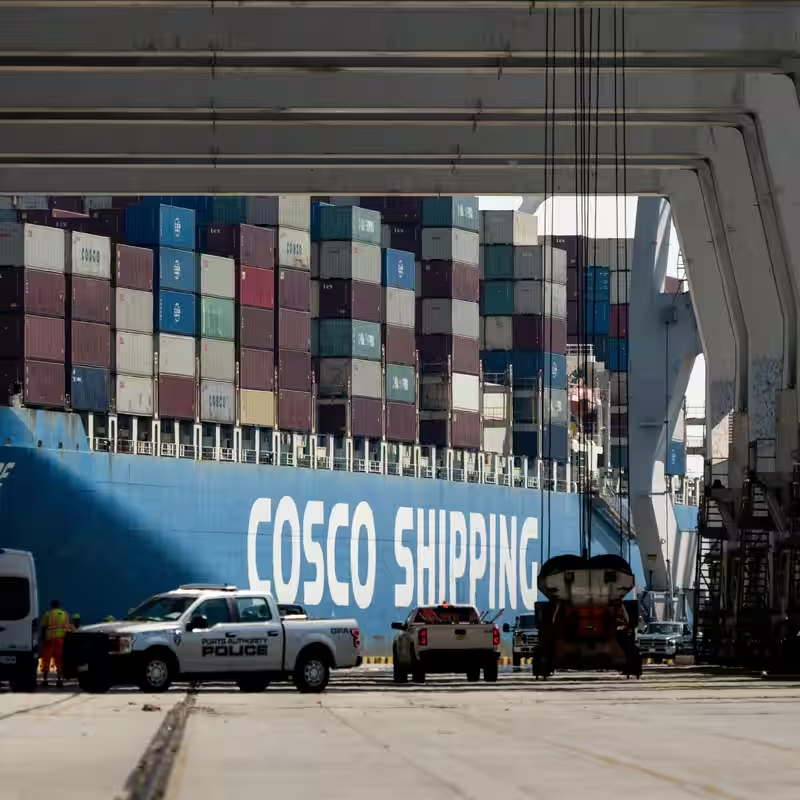Table of Contents
- What Are the New Chinese Ships Docking Fees?
- Why the U.S. Is Acting Now
- How the Fees Work: Who Pays What?
- China’s Response and Potential Retaliation
- Impact on Global Trade and U.S. Industry
- Sources
U.S. Starts Charging Chinese Ships to Dock at Its Ports
In a significant escalation of trade tensions, the United States has begun imposing docking fees on Chinese ships at American ports as of Tuesday, October 14, 2025. The move targets China’s overwhelming dominance in global commercial shipbuilding and aims to breathe new life into America’s struggling domestic shipbuilding sector.
Why the U.S. Is Acting Now
The policy, initially launched under a trade investigation during the Biden administration, has been fully implemented under the Trump administration as part of a broader strategy to counter what U.S. officials describe as “unfair subsidies” provided by Beijing to its shipbuilders.
“Anything we can do to chip away at the disparity in shipbuilding that exists between the United States and China is to our benefit,” said Mihir Torsekar, a senior economist at the Coalition for a Prosperous America.
How the Chinese Ships Docking Fees Work
The new fees apply in two key scenarios:
- Chinese-owned vessels: Any ship registered to a Chinese shipping company must pay a port access fee upon docking at U.S. ports.
- Chinese-built vessels: Even non-Chinese carriers (like Maersk or MSC) will be charged if they operate ships constructed in Chinese shipyards.
This distinction is critical—it means the U.S. isn’t just targeting ownership, but the very origin of ship construction, directly challenging China’s role as the world’s top shipbuilder.
China’s Response and Potential Retaliation
Beijing has not taken the move lightly. On Friday, China’s Ministry of Transport announced plans to impose reciprocal fees on American vessels docking in Chinese ports.
“This is a clear act of economic coercion,” a spokesperson said. “We will defend our national interests with proportionate countermeasures.”
The tit-for-tat dynamic comes amid renewed friction over rare earth minerals—another flashpoint in the U.S.-China trade relationship.
Impact on Global Trade and U.S. Industry
Industry analysts warn the fees could ripple through global supply chains. Shipping costs may rise, especially for goods like furniture, lumber, and kitchen cabinets—categories already hit by new tariffs taking effect the same day.
However, supporters argue the long-term payoff could be worth it. The U.S. commercial shipbuilding industry has shrunk to less than 1% of global output, while China controls over 50%.
| Metric | United States | China |
|---|---|---|
| Global Shipbuilding Share (2025) | <1% | >50% |
| Major Shipyards | 3 (active commercial) | Over 100 |
| Government Subsidies (est.) | Minimal | $ billions annually |
By making Chinese-built ships more expensive to operate in U.S. waters, the policy aims to incentivize global carriers to consider American or allied-built alternatives—though such options remain limited and costly.
Sources
The New York Times – U.S. Starts Charging Chinese Ships to Dock at Its Ports




